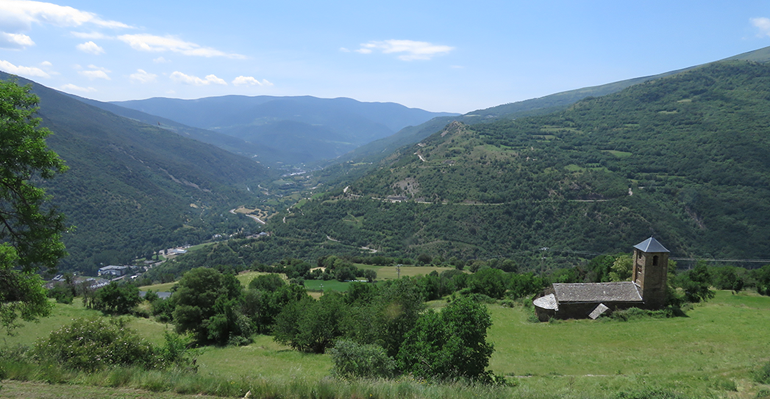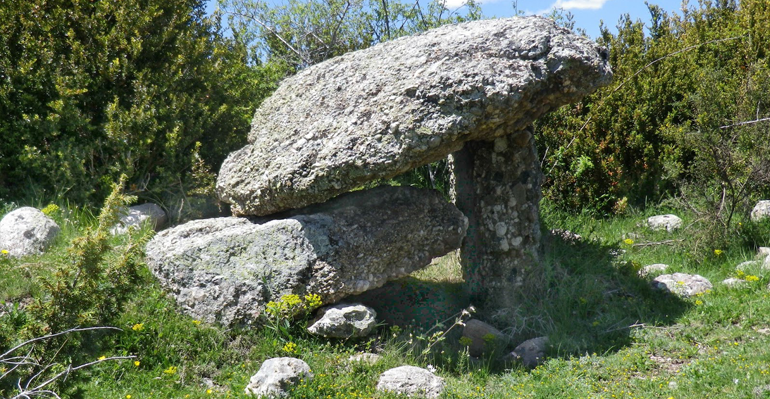
Tasting The Landscape: From The Dinosaurs to The Glass
Introduction:
On this walk, you will discover the origins of a historic quarry hidden in the landscape - an environment that reveals the ingenuity and craftsmanship of past inhabitants who extracted essential tools, such as millstones, to process local products like wheat and olives into flour and oil.
In a landscape as inhospitable as it is fascinating, geology takes center stage, revealing how millions of years of Earth's history transformed a former seabed - a basin where seas and rivers appeared and vanished - into rock formations born from sand, stones, and countless animals. Today, these formations spark the imagination with a lunar-like appearance and shapes and colors reminiscent of surrealist paintings.
This calcareous and characteristically dry land also allows us to appreciate the richness of aromatic plants, which demonstrate how Mediterranean vegetation has adapted to extreme conditions and developed its well-known ability to produce the aromas that symbolize local gastronomy. These aromas are present in wines, honeys, oils, and nuts and can be experienced during a tasting at a local winery or in restaurants in the area.
What you'll discover:
Old Quarry Mill Wheels (Clot de Les Moles):
Historic quarry showing stone-to-millstone transformation process.
Moon Landscape:
Lunar-like terrain shaped by millions of years of erosion revealing an ancient history of a coast bathed by a tropical sea at the end of the Cretaceous.
Aromatic Plants:
Mediterranean herbs including rosemary, thyme, and lavender used in traditional cuisine.
Why this trail matters:
This trail helps travelers to:
- Discover a historic quarry that reveals the effort involved in extracting stone and transforming it into basic tools used for food processing.
- Understand the importance of collective work and the sharing of local knowledge on land that sustained the well-being of the community.
- Explore, within a geopark, the direct connection between geology and gastronomy through the creation of specific tools shaped by the landscape.
- Appreciate the rich diversity of aromatic plants in the area and understand their relationship with the sedimentary rocks and their role in both local and Mediterranean gastronomy.
- Enjoy original or transformed products typical of the Pallar’s region and the Mediterranean - such as wine, almonds, and honey - and learn how they are produced and how they connect to the local landscape and geology.
- Observe small and large-scale geological features that illustrate the area’s diversity and understand how climate and the passage of time over millions of years have shaped the Pallar’s landscape into forms that evoke distant, lunar-like places.
Heritage Trail Map:
Heritage Trail Details:
- Length (km):
- 6,79 Km
- Possibility to shorten the route to 3,5 km avoiding the top point
- Level of difficulty:
- Low or Medium - 336 m slope
- Duration:
- 2-4 hours
- Getting there:
- Public transport to Tremp
- Taxi or private car or walking to the place
- Clothing:
- Comfortable hiking shoes and weather-appropriate clothing for outdoor exploration
- Recommended hat and sunscreen
- Tools needed:
- Camera for capturing tile discoveries
- Map or GPS for navigating the journey
- Binoculars
- Magnifying glass
- Nature and geology field guides
- Safety guidelines:
- Sloping and unstable terrain
- Hot and dry area on a rocky surface all the time
- Guiding:
- Guided tour (optional)
- Self-guided (on your own)
- Contacts for more details:
- Naturalwalks
www.naturalwalks.com
+34 662 251 059
info@naturalwalks.com - Ajuntament de Tremp
www.ajuntamentdetremp.cat
+34 973650005 ext. 344
promocioeconomica@tremp.cat, lfiguera@tremp.cat - Consell Comarcal del Pallars Jussà. Epicentre centre de visitants del Geoparc Orígens
+34 973 635 470 / 693 100 336
Pg del Vall 13, 25620 Tremp
epicentre@pallarsjussa.cat - Eureka SGN
www.eurekasgn.com
+34 621 095 834
info@eurekasgn.com - Vineyards Terré de Palllars, Celler Vilacorona
+34 616 70 10 80
nuria@terrerdepallars.com - Restaurant: Cal Jou
www.caljou.com
+34 676 36 80 08
info@caljou.com
- Naturalwalks
Quests / Chances to be creative:
Quest 1: 'Tasting The Landscape: From The Dinosaurs to The Glass'
Mission Overview
This walk invites travelers to immerse themselves in the essence of the territory: its unique geology, which shapes the character of the natural area—Geopark Origens—where they can discover the connection between the local geology, the aromas of the landscape, and the culinary traditions expressed through wine.
Success Criteria
Experience firsthand how geology serves as a common thread connecting elements of local Mediterranean culture through the senses of smell (the aromas from aromatic plants native to the territory) and taste, particularly through the wine produced in the region.
Quest Questions
- What aromatic plants have you been able to recognize along your walk?
- What relationships do you see between the geology of this area and the production of aromatic products, such as wine, honey, or cheese?
- Can you associate this type of limestone terrain with the presence of fossils, and if so, why? Do you think it can influence the characteristics of local wines?
Final thoughts
It is important that visitors can experience different levels of interaction with the territory, helping to explain the complexity of the relationships between nature and culture throughout history.
In this case, the connection is evident between elements separated by extreme spans of time: the millions of years revealed by geology, the thousands of years of plant adaptation to the territory, and the co-evolution of agriculture with the Mediterranean climate, for example, through vine species imported from Georgia just over 2000 years ago. All these elements are linked, helping us understand the culture of wine and many crops associated with the Mediterranean, such as almond trees, hazelnut trees, stone pine groves, etc.

